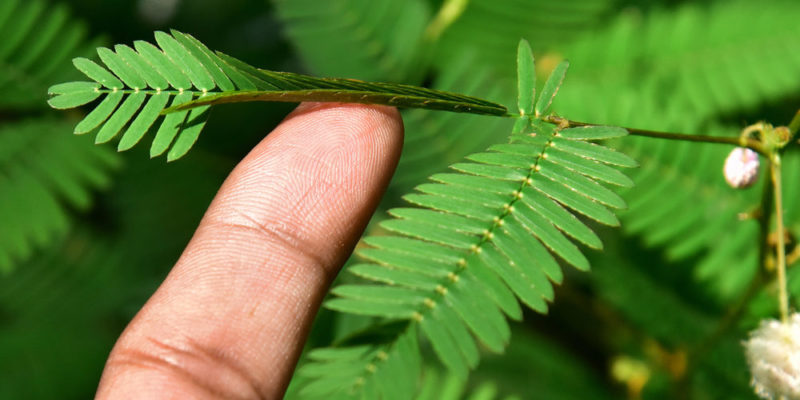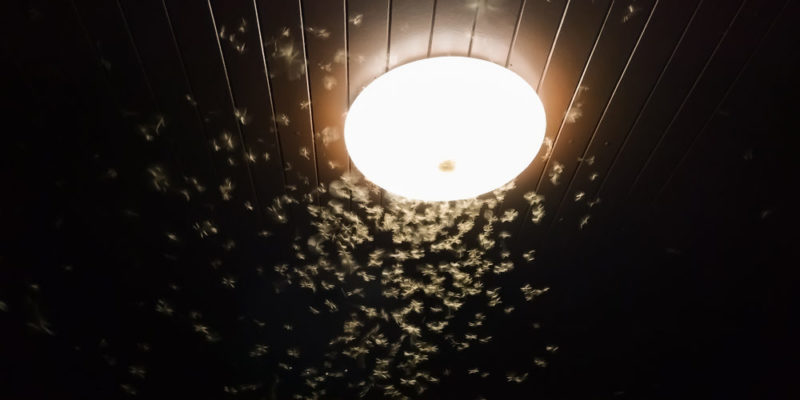We explain what irritability is, what cellular irritability is, irritability in plants and animals. Importance and examples.

What is irritability?
In the field of biology, irritability is understood as one of the fundamental properties of living beings which allows them to detect unfavorable changes in the environment in which they find themselves and react to them, thus preventing said changes from harming their well-being or compromising their survival.
In this way, irritability It is part of the homeostatic capabilities of living beings that is, its mechanisms designed to perpetuate an internal balance and thus adapt and survive changes in the environment that threaten it.
Thus, when faced with a stimulus coming from the environment (external) or from within the organism (internal), living beings react in a particular way depending on the nature of the stimulus that triggers the reaction and the level of complexity of the living being.
See also: Budding
cellular irritability

Cells have a permeable plasma membrane, which allows the interior protoplasm to detect and react to chemical and physical changes in the environment, in order to provide a more suitable environment for its development. Thus, cells react to changes in pH, temperature, sunlight, electricity or the presence of nutrients and organic matter.
This microscopic degree of irritability generally depends on biochemical reactions detectable by specialized organelles or by the plasma membrane itself. This is how unicellular organisms adapt, for example, to the conditions of the environment, but also that the cells of the body's immune system react to the presence of foreign agents in it.
Irritability in plants

Plants lack a complex nervous system that allows planned reactions to internal and external stimuli, so Their modes of irritability usually involve more or less slow movements governed by phytohormones, and which can be classified into two types:
- Tropisms Sustained orientation or growth reactions of plants, in the face of a sustained stimulus, which can be positive (in the direction of the stimulus) or negative (away from the stimulus). The cases of tropism are:
- Phototropism Plants use sunlight for their photosynthesis processes, but too much sun can burn their leaves or dry out their bodies. For this reason, plants will grow in search of the sun (positive phototropism) when it is too little for them, and they will grow away from the sun (negative phototropism) when it is too much for them.
- Geotropism Plants need to fix their roots in the ground and raise their stems in the opposite direction, regardless of where they are. For this reason, the roots will always seek the earth's center of gravity, while the stems will grow in the opposite direction, never the other way around.
- Hydrotropism Another component that plants require for their metabolism is water, and since their roots are the organs through which they can absorb it, it is common to see them grow and extend in the direction of water deposits, and not the other way around.
- Thigmotropism We will have once noticed how plants adapt their growth to the obstacles around them, surrounding them, growing over them or crawling away from them. This is because they react to the obstacle, preventing it from hindering or impeding their growth.
- Nastias Changes in the leaves and other parts of plants, in response to a specific and momentary external stimulus. They can also be of different types, for example:
- Photonasty Many plants respond to the presence or absence of sunlight in a certain way, either by wrinkling their leaves to reduce the surface area exposed to light (in the case of excess light), or by flowering once the sun has fallen, if it is during that moment when it is most convenient for you to do so, due to the presence of pollinating insects or winds, for example.
- Seismonasty It is a type of reaction of the leaves of certain plants to physical stimuli such as rubbing or touch. In some cases they can close their leaves to protect or hide them, or they can secrete toxic substances in reaction to what is perceived as a threat.
Irritability in animals

In the case of animals, the presence of a more or less complex nervous system largely determines their reactions to certain stimuli, based first of all on their behavior. Actively moving away from a source of discomfort, moving habitat or, on the contrary, approaching a source of heat when it is cold, or covering yourself from the sun when it is hot, are examples of this. These behaviors can be classified into:
- tactics Movements of the organism in response to the appearance or disappearance of certain stimuli, associated with conditions of benefit for the animal. This is what happens when reptiles sunbathe to warm up their cold blood, since they are unable to regulate it in any other way.
- Reflex acts Basic reaction mechanisms as an immediate response to a situation of danger, pain or threat, and which occurs without prior planning, but as an automatic mechanism. This is what happens when we close our eyelids in case something hits us in the eye.
Importance of irritability
irritability entails a fundamental principle for the success of life: adaptation. A living being must be able to perceive changes in its environment, especially those that threaten its well-being in one way or another, in order to react in such a way that its state of internal balance is maintained as much as possible. This ability plays an important role in evolution, since as adaptations become more radical and more persistent, they can give rise to new species.
Examples of irritability

Some simple examples of irritability in living beings are:
- The attraction of nocturnal moths to artificial light, which they associate with moonlight (positive tactism) versus the flight of cockroaches when we turn on the kitchen light and they run to hide (negative tactism).
- The shrinking of its leaves when we touch a “mimosa” or “dormidera” plant, or the closing of the leaves of a carnivorous plant when it detects an insect among them.
- The roots of ficus trees that lift the concrete from the sidewalks in their search for water from the pipes (positive hygrotropism).
- The movement of sunflower branches, following the path of the sun in the sky (positive phototropism).
References
- “Irritability (biology)” on Wikipedia.
- “Irritability, a fundamental property of living beings” in the Ministry of Education of Chile.
- “Irritability” in Very Educational.
- “Irritability” in Biology Online Dictionary.
- “Irritabilidy” in The Encyclopaedia Britannica.





